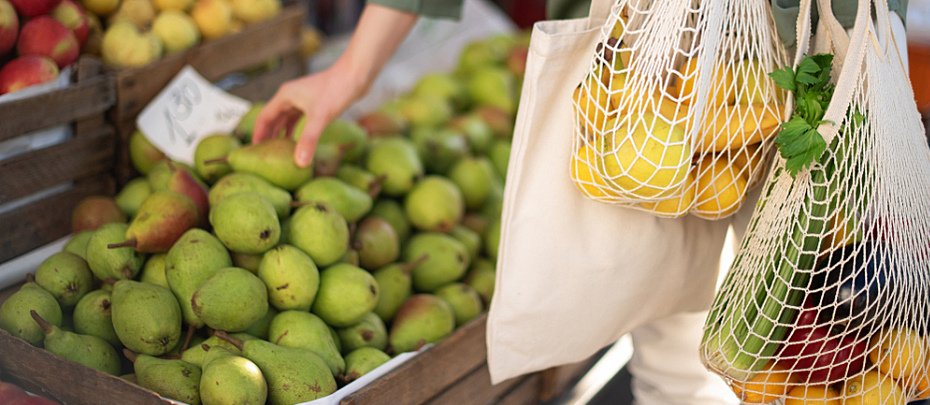If you have diabetes, you're probably well aware that some foods elevate blood sugar levels more than others after a meal. This is called postprandial glucose response (PPG response), and it's key to effective diabetes management. To understand how certain foods affect your blood sugar, it can be helpful to know where they land on the glycemic index scale. But what is the glycemic index, exactly, and how does it affect PPG response?
What Is the Glycemic Index? Understanding Low vs. High Glycemic Carbohydrates
19 November 2023 | Sunday | News

Image Source : https://www.nutritionnews.abbott/
Read on to learn about the relationship between the glycemic index and diabetes and how you can support your blood sugar by making informed choices about what — and how — you eat.
What Is the Glycemic Index?
Glycemic index is a measure of how quickly a food causes your blood sugar levels to rise. This is determined by how fast your body converts carbohydrates into glucose. Foods are ranked on a scale of zero to 100. A zero rating means the food doesn't increase blood sugar levels after you eat it, while a rating of 100 means the food causes blood sugar levels to increase rapidly.
Generally speaking, foods with a rating of 55 and lower are considered low glycemic, and foods with a rating of 70 and higher are considered high glycemic.
The American Diabetes Association recommends that people with diabetes keep blood sugar levels under 180 mg/dL between one and two hours after eating. Since the glycemic index measures how foods affect your blood sugar, understanding their general placement on the scale is one tool that can help you achieve this goal.
High Glycemic Index Carbohydrates
Here are some examples of high glycemic index carbohydrates, which cause blood sugar levels to increase more quickly:
- White bread
- White rice
- Rice cakes
- Pancakes
- Baked and mashed potatoes
- Overripe bananas
- Watermelon
Low Glycemic Index Carbohydrates
These low glycemic carbohydrates are converted into glucose more slowly, which can help minimize blood sugar spikes:
- Legumes, such as beans, lentils and chickpeas
- Boiled yams
- Peanuts and cashews
- Pears
- Grapefruit
- Cherries
- Apples
- Barley
- Raw carrots
- Greens, such as spinach, asparagus and kale
Which Factors Influence the Glycemic Index?
Here are some factors that influence how foods affect blood sugar levels:
- Protein, Fiber & Fat Content: Consuming carbohydrates along with protein and fiber can lower the glycemic index of a meal. Fat slows digestion, so foods that contain more fat convert carbs into glucose more slowly.
- Ripeness: The more ripe a fruit or starchy vegetable, the higher its glycemic index.
- Preparation: Adding vinegar, lemon or lime to increase the acidity of starchy foods may also lower their glycemic index.
- Balance: The glycemic index is calculated for individual foods. When you combine several foods at mealtime it changes the overall effect on your blood sugar.
Understanding the Glycemic Index and Diabetes
If you live with diabetes, regulating your blood sugar is essential to maintaining long-term health. Well-managed blood sugar can mean the difference between living a long, healthy life with diabetes and encountering complications such as vision loss, stroke and kidney disease.
The glycemic index isn't a perfect science, but it can be a helpful tool to support informed choices about what and how you eat to help you achieve healthier blood sugar levels. For example, pair high glycemic foods with fat, fiber and protein; squeeze a lime over fresh mango; or choose a just-ripe banana over an overripe one. Simple changes like these can help you better manage your diabetes.
Most Read
- Management of Relapsed/Refractory Multiple Myeloma
- 2025 Drug Approvals, Decoded: What Every Biopharma Leader Needs to Know
- BioPharma Manufacturing Resilience: Lessons From Capacity Expansion and Supply Chain Resets from 2025
- APAC Biopharma Review 2025: Innovation, Investment, and Influence on the Global Stage
- Top 25 Biotech Innovations Redefining Health And Planet In 2025
- How Health Systems Are Reshaping Drug Adoption, Partner Models, and Market Access in 2026
- The New AI Gold Rush: Western Pharma’s Billion-Dollar Bet on Chinese Biotech
- Single-Use Systems Are Rewiring Biopharma Manufacturing
- The State of Biotech and Life Science Jobs in Asia Pacific – 2025
- Asia-Pacific Leads the Charge: Latest Global BioSupplier Technologies of 2025
- Invisible Threats, Visible Risks: How the Nitrosamine Crisis Reshaped Asia’s Pharmaceutical Quality Landscape
Bio Jobs
- The State of Biotech and Life Science Jobs in Asia Pacific – 2025
- Avantor’s New CEO Ligner Aims to Unlock Global Potential and Deliver Shareholder Value
- AstraZeneca Commits $50 Billion to U.S. Expansion by 2030 in Biggest-Ever Global Investment
- Thermo Fisher, SAMRC, and South Africa’s Department of Science and Innovation Launch CATIR to Nurture Next-Gen Scientists
- Cube Biotech Appoints Former Sartorius CEO Dr. Joachim Kreuzburg to Board of Directors
- FDA’s AI Transition Marks a Turning Point in Drug Review: Industry Faces Pressure to Adapt Amid 20% Workforce Cut
- WuXi XDC Completes Mechanical Build of Singapore Bioconjugate Manufacturing Hub
News
Editor Picks











